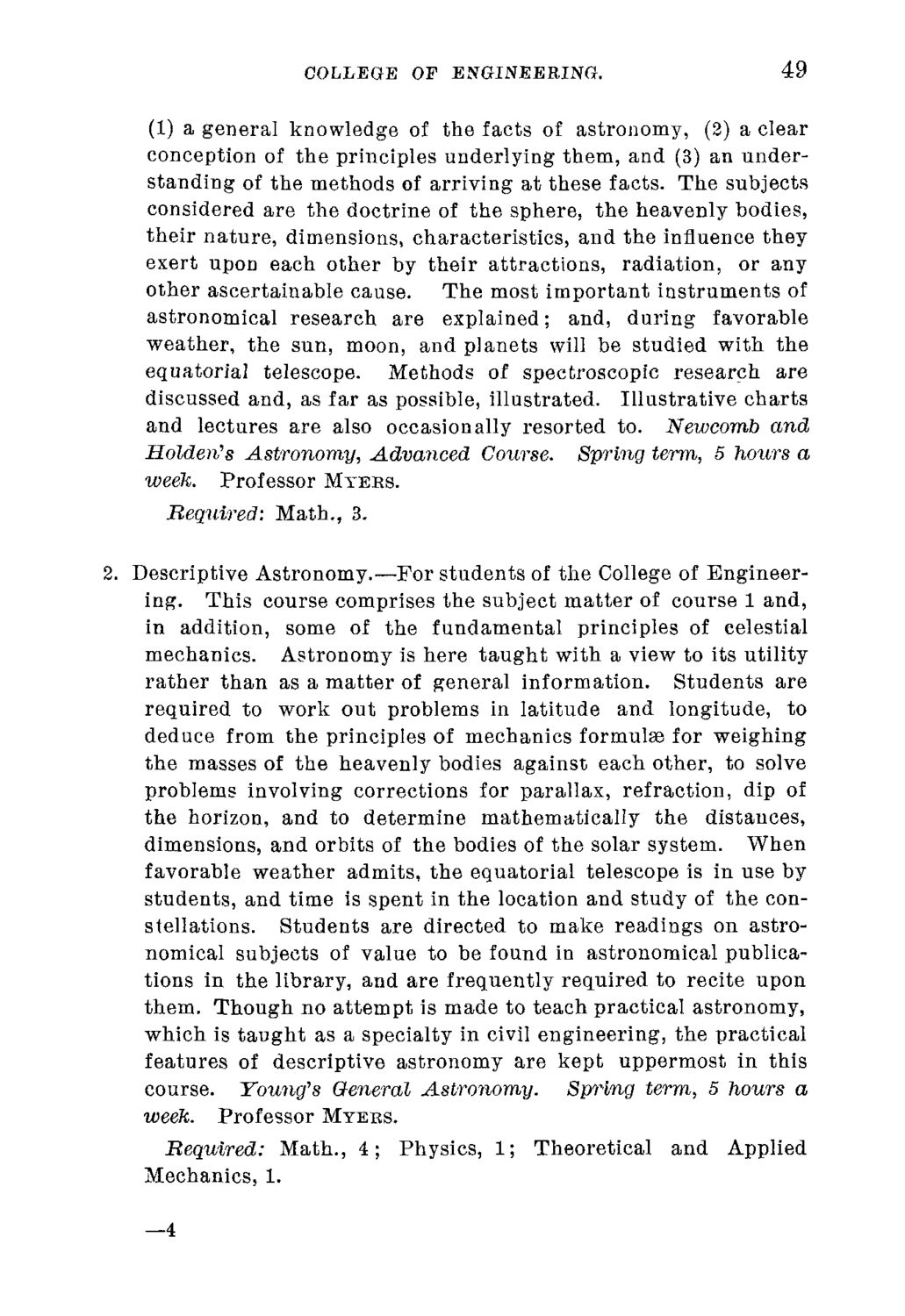| |
| |
Caption: Course Catalog - 1891-1892
This is a reduced-resolution page image for fast online browsing.

EXTRACTED TEXT FROM PAGE:
COLLEGE OP ENGINEERING. 49 (1) a general knowledge of the facts of astronomy, (2) a clear conception of the principles underlying them, and (3) an understanding of the methods of arriving at these facts. The subjects considered are the doctrine of the sphere, the heavenly bodies, their nature, dimensions, characteristics, and the influence they exert upon each other by their attractions, radiation, or any other ascertainable cause. The most important instruments of astronomical research are explained; and, during favorable weather, the sun, moon, and planets will be studied with the equatorial telescope. Methods of spectroscopic research are discussed and, as far as possible, illustrated. Illustrative charts and lectures are also occasionally resorted to. Newcomb and Holden's Astronomy, Advanced Course. Spring term, 5 hours a week. Professor MYEBS. Required: Math., 3. 2. Descriptive Astronomy.—For students of the College of Engineering. This course comprises the subject matter of course 1 and, in addition, some of the fundamental principles of celestial mechanics. Astronomy is here taught with a view to its utility rather than as a matter of general information. Students are required to work out problems in latitude and longitude, to deduce from the principles of mechanics formulae for weighing the masses of the heavenly bodies against each other, to solve problems involving corrections for parallax, refraction, dip of the horizon, and to determine mathematically the distances, dimensions, and orbits of the bodies of the solar system. When favorable weather admits, the equatorial telescope is in use by students, and time is spent in the location and study of the constellations. Students are directed to make readings on astronomical subjects of value to be found in astronomical publications in the library, and are frequently required to recite upon them. Though no attempt is made to teach practical astronomy, which is taught as a specialty in civil engineering, the practical features of descriptive astronomy are kept uppermost in this course. Young's General Astronomy. Spring term, 5 hours a week. Professor MYEBS. Required: Math., 4; Physics, 1; Theoretical and Applied Mechanics, 1. —4
| |